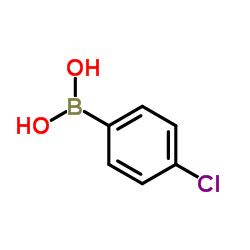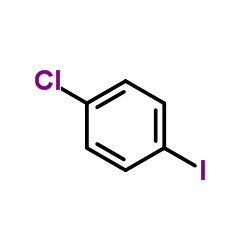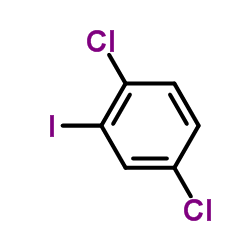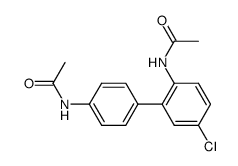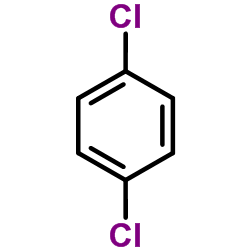2,4',5-Trichlorobiphenyl

2,4',5-Trichlorobiphenyl structure
|
Common Name | 2,4',5-Trichlorobiphenyl | ||
|---|---|---|---|---|
| CAS Number | 16606-02-3 | Molecular Weight | 257.543 | |
| Density | 1.4±0.1 g/cm3 | Boiling Point | 331.5±27.0 °C at 760 mmHg | |
| Molecular Formula | C12H7Cl3 | Melting Point | 67℃ | |
| MSDS | Chinese USA | Flash Point | 227.3±19.3 °C | |
| Symbol |


GHS08, GHS09 |
Signal Word | Warning | |
| Name | 2,4',5-Trichlorobiphenyl |
|---|---|
| Synonym | More Synonyms |
| Density | 1.4±0.1 g/cm3 |
|---|---|
| Boiling Point | 331.5±27.0 °C at 760 mmHg |
| Melting Point | 67℃ |
| Molecular Formula | C12H7Cl3 |
| Molecular Weight | 257.543 |
| Flash Point | 227.3±19.3 °C |
| Exact Mass | 255.961334 |
| LogP | 5.52 |
| Vapour Pressure | 0.0±0.7 mmHg at 25°C |
| Index of Refraction | 1.604 |
| InChIKey | VAHKBZSAUKPEOV-UHFFFAOYSA-N |
| SMILES | Clc1ccc(-c2cc(Cl)ccc2Cl)cc1 |
CHEMICAL IDENTIFICATION
HEALTH HAZARD DATAACUTE TOXICITY DATA
|
| Symbol |


GHS08, GHS09 |
|---|---|
| Signal Word | Warning |
| Hazard Statements | H373-H410 |
| Precautionary Statements | P273-P391-P501 |
| Hazard Codes | N: Dangerous for the environment; |
| Risk Phrases | R33 |
| Safety Phrases | S35 |
| RIDADR | UN 3432 9/PG 2 |
| RTECS | DV8810000 |
| HS Code | 2903999090 |
|
~60% 
2,4',5-Trichlor... CAS#:16606-02-3 |
| Literature: Chemosphere, , vol. 56, # 8 p. 735 - 744 |
|
~% 
2,4',5-Trichlor... CAS#:16606-02-3 |
| Literature: Chemosphere, , vol. 31, # 2 p. 2687 - 2705 |
|
~% 
2,4',5-Trichlor... CAS#:16606-02-3 |
| Literature: Gazzetta Chimica Italiana, , vol. 65, p. 632,643 |
|
~% 
2,4',5-Trichlor... CAS#:16606-02-3 |
| Literature: Gazzetta Chimica Italiana, , vol. 65, p. 632,643 |
|
~% 
2,4',5-Trichlor... CAS#:16606-02-3 |
|
Literature: Bulletin de la Societe Chimique de France, , vol. |
|
~% 
2,4',5-Trichlor... CAS#:16606-02-3 |
| Literature: Journal of Organic Chemistry, , vol. 31, p. 1436 - 1447 |
| HS Code | 2903999090 |
|---|---|
| Summary | 2903999090 halogenated derivatives of aromatic hydrocarbons VAT:17.0% Tax rebate rate:9.0% Supervision conditions:none MFN tariff:5.5% General tariff:30.0% |
|
Liver cell cytoplasmic inclusions in experimental porphyrias: their demonstration with the ferric ferricyanide reduction reaction.
Exp. Toxicol. Pathol. 49(3-4) , 289-93, (1997) In the present paper we describe needle-shaped and granular cytoplasmic inclusions in the liver cells of mice and rats with experimental porphyria biochemically resembling human porphyria cutanea tard... |
|
|
Alteration of regiospecificity in biphenyl dioxygenase by active-site engineering.
J. Bacteriol. 184(13) , 3682-8, (2002) Biphenyl dioxygenase (Bph Dox) is responsible for the initial dioxygenation step during the metabolism of biphenyl. The large subunit (BphA1) of Bph Dox plays a crucial role in the determination of th... |
|
|
Impacts of molt-inhibiting organochlorine compounds on epidermal ecdysteroid signaling in the fiddler crab, Uca pugilator, in vitro.
Comp. Biochem. Physiol. C. Toxicol. Pharmacol. 150(4) , 436-41, (2009) Because of their chemical stability and lipophilicity, many organochlorine compounds (OCs) can readily accumulate in fatty tissues of crustaceans. Several OCs have been reported to inhibit crustacean ... |
| 1,4-dichloro-2-(4-chlorophenyl)benzene |
| MFCD00078742 |
| 1,1'-Biphenyl, 2,4',5-trichloro- |
| 2,4',5-Trichlorobiphenyl |
| 2,4',5-Trichlorobiphényl |

